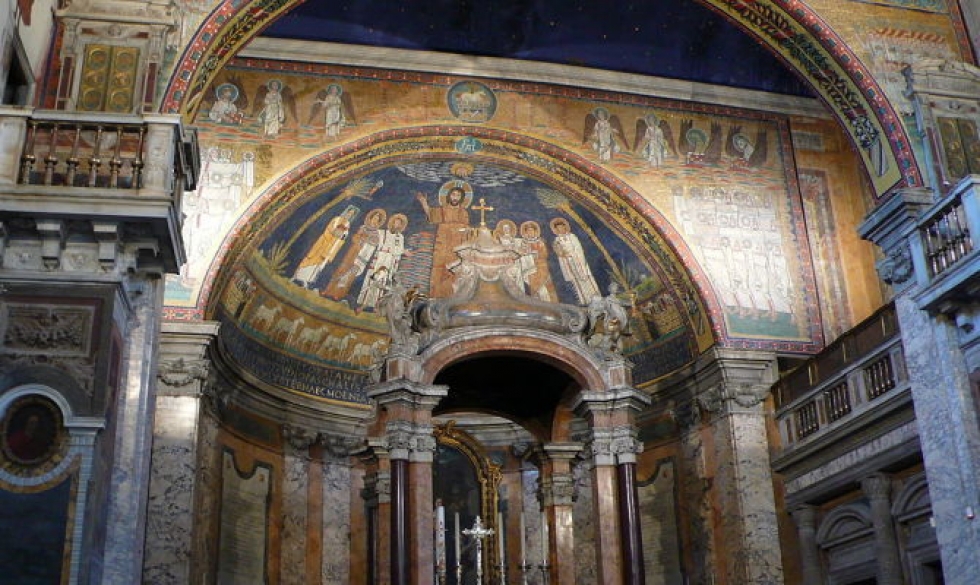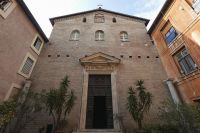One of the most beautiful and fascinating medieval works in Rome is definitely the Basilica of Saint Praxedes. This church is accessible by the street that takes its name. This street, near Santa Maria Maggiore, almost hidden, would hardly be known if not for the presence of such an important and peculiar cult. It is dedicated to Saint Praxedes. Daughter of the Roman senator Pudens, that converted to Christianity, became a saint himself, Saint Praxedes hosted in her house, with the sister Saint Pudentiana, Peter the apostle before he was imprisoned and crucified (64 or 67 AD).
Exactly where their house was, Christians built a place of worship, starting probably in the second half of the 5th century CE. The first Christian places of worship in Rome were called “tituli”. The titulus was a private building of any dimension dedicated to religious services, but it was also used by the first Christian communities as a hangout. It was a sort of modern parish. The owner of the property, in its will, donated it to the Christian community, and the titulus, that owed its name to the specific donator, became the core of the future church. The actual basilica, the one we see today, masterpiece of medieval architecture, was built on the remains of the “titulus Praxedis”, the titulus of Praxedes, around 817-820 AD by the will of Pope Paschal I. In spite of the numerous restoring works through the centuries, the plan and the internal organization of spaces are still the original ones. It presents three aisles, and it has no transept. At the centre of the nave’s pavement there is a beautiful disc in red porphyry, covering the well that, according to tradition, Saint Praxedes hosted the remains of more than 2.000 Christian martyrs. The polychrome marble pavement, typical of the High Middle Age, is astonishing, but what makes this basilica completely unique is the splendid chapel of Saint Zenon, halfway on the right aisle. This space was commissioned by Pope Paschal I in his mother’s memory, Theodora, devoted to Saint Zenon. The chapel is a masterpiece of Byzantine art. A noteworthy element are its mosaics with its incredibly small golden tesserae, that, wisely set, give the work an unparalleled brightness. The mosaic of the vault is particularly famous. It represents in the centre a medallion with the figure of Christ, hold by 4 angels around it. Because of the beauty of its mosaics (that represent also a Madonna with Child, Pope Paschal I and his mother Theodora), Saint Zenon’s chapel is called “Garden of Heaven”. The space on the right of the chapel hosts a part of the column to which Jesus was tied to be whipped. It was brought to Rome from Jerusalem at the beginning of the 13th century. It presents a slightly conic shape, it is 63 centimetres tall, and it is preserved in a display case in golden bronze. Other elements of Paschal I’s period are the mosaics on the triumphal arch and the apse. In this part of the church there is also a fresco from 1735 representing Saint Praxedes collecting Christian martyrs’ blood. The canopy and the high altar, masterpiece of the late Baroque, are also from this period. The wooden coffered ceiling, instead, is from the following century. Otherwise, if we want to see some important remains of the titulus Praxedis, we need to go to the courtyard in front of the basilica’s façade: the colonnade remains are exactly the ones of the 5th century building.
Giuseppe Rosselli




















